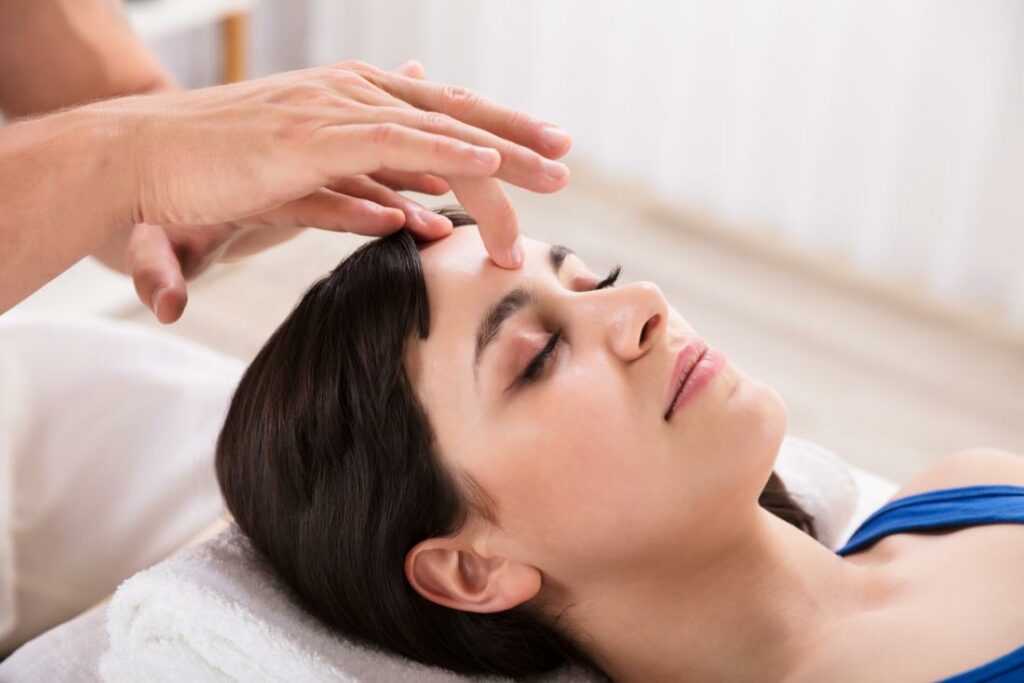Do you suffer from headaches on a regular basis? If so, you’re not alone. In fact, according to the studies, migraines affect more than 36 million Americans. While there are many different ways to treat headaches, one option that you may not have considered is physical therapy. Physical therapy can be an effective treatment for headaches, and it has a number of other benefits as well. Keep reading to learn more about physical therapy for headaches and how it can help you get relief from your symptoms!
Contents
Understanding Headaches
 Headaches are one of the most common reasons people see a doctor. In fact, nine out of ten adults experience a headache at some point in their lives. And while they’re usually not serious, headaches can be extremely painful and frustrating.
Headaches are one of the most common reasons people see a doctor. In fact, nine out of ten adults experience a headache at some point in their lives. And while they’re usually not serious, headaches can be extremely painful and frustrating.
There are many different types of headaches, but the most common are tension headaches and migraines. Tension headaches are usually caused by stress or muscle tension, and they tend to feel like a tight band around your head. Migraines, on the other hand, are often accompanied by symptoms like nausea, vomiting, and sensitivity to light and sound.
While over-the-counter painkillers can help relieve headache pain, they don’t always work. And for some people, they can actually make headaches worse.
If you’re looking for a more natural way to relieve your headache pain, you may want to consider physical therapy. So, let’s understand how physical therapy for headaches is helpful!
Techniques Of Physical Therapy For Headaches
It is very common to hear people say that they are suffering from a headache. In fact, headaches are one of the most frequent complaints that people have. So here are various techniques of physical therapy that are proven to be helpful in managing headaches.
Trigger point release therapy
One of the most common techniques is trigger point release therapy. This therapy is based on the theory that headaches are caused by muscle knots or trigger points. The therapist will use his or her fingers to apply pressure to these trigger points. This pressure will help to release the muscle knots and relieve the pain.
Massage therapy
Another common technique is massage therapy. This therapy can be used to relieve the tension in the muscles that are causing headaches. The therapist will use his or her hands to massage the affected area. This will help to release the tension and reduce the pain. For example, if the headaches are caused by neck tension, then the therapist will massage the neck muscles.
Acupuncture
Acupuncture is another ancient technique that is often used to treat headaches. This therapy is based on the theory that there are energy points in the body that can be stimulated to relieve pain. The therapist will insert needles into these points to stimulate them. This will help to release the tension and reduce the pain.
Cervical exercises
 Cervical exercises for headaches can help strengthen and stretch your neck muscles. These exercises can also help improve your range of motion and decrease pain.
Cervical exercises for headaches can help strengthen and stretch your neck muscles. These exercises can also help improve your range of motion and decrease pain.
One cervical exercise is the chin tuck. To do this exercise:
- Sit up tall in a chair with your shoulders relaxed.
- Tuck your chin down so that you feel a slight stretch in the back of your neck.
- Hold for 5 seconds and then release.
- Repeat 10 times.
Another cervical exercise is neck rotation. To do this exercise:
- Sit up tall in a chair with your shoulders relaxed.
- Slowly turn your head to the right, holding for 5 seconds.
- Return to the starting position and then repeat on the left side.
- Repeat 10 times on each side.
Cervical traction is another option that your physical therapist may use to treat your headaches. This involves using a machine to apply gentle pressure to your neck. This can help stretch your muscles and nerves, which can help relieve pain.
Manual therapy
Manual therapy is another common treatment used by physical therapists to treat headaches. This may involve massage, manipulation of the neck and head, or mobilization. Manual therapy can help reduce muscle tension and pain. It works by improving blood flow and relaxation to the muscles. And it can also help to improve the range of motion.
One study found that manual therapy was effective in reducing the intensity and frequency of headaches in people with chronic tension-type headaches.
Postural exercises
Sometimes, headaches are caused by poor posture. Physical therapy can help to improve your posture and alleviate your headaches. There are several postural exercises that you can do at home or at the office, such as:
- Sit up straight in your chair with your shoulders back and down
- Take a break every 30 minutes to walk around and stretch
- Avoid slouching when you are standing or walking
- Sleep on your back with a pillow under your knees
Cranio-cervical techniques
It is a type of physical therapy that uses gentle manipulative techniques on the bones of the skull and spine. It is effective in treating headaches, neck pain, and migraines. For example, you might receive mobilization of the cervical spine, cervical traction, and/or soft tissue massage. These techniques are used to increase the range of motion in the neck, improve blood flow, and reduce muscle tension.
Relaxation techniques
 Finally, relaxation techniques can also be used to help alleviate headaches. This includes practices like yoga, meditation, and deep breathing exercises. While there is no clear scientific evidence that relaxation techniques are effective for headaches, many people find them helpful.
Finally, relaxation techniques can also be used to help alleviate headaches. This includes practices like yoga, meditation, and deep breathing exercises. While there is no clear scientific evidence that relaxation techniques are effective for headaches, many people find them helpful.
Because they work in different ways, it may be beneficial to try a few different relaxation techniques to see what works best for you.
So, these are just a few of the most common ones. If you are suffering from headaches, it is important to talk to your doctor or a physical therapist to find out which techniques will be most effective for you.
What Is The Best Exercise For Headaches?
As there are different types of headaches, there is no one-size-fits-all answer to this question. However, studies have shown that aerobic exercise can be effective in alleviating tension headaches and migraine headaches.
Aerobic exercise refers to any activity that increases your heart rate and breathing. This could include activities like walking, jogging, swimming, biking, or even dancing.
A study published in the journal has found that aerobic exercise can be an effective treatment for tension headaches. The study found that just 30 minutes of aerobic exercise three times per week can help to reduce the frequency and severity of tension headaches.
The reason why aerobic exercise may be so effective is that it helps to increase blood flow to the brain. This increased blood flow can help to reduce inflammation and pain. Exercise has also been shown to release endorphins, which are natural painkillers.
Benefits of Physical Therapy For Headaches
There are many benefits of physical therapy for headaches. Some of these benefits include:
- Reduction in intensity: It is observed that people who regularly undergo physical therapy for headaches report a significant reduction in the intensity of their headaches.
- Reduction in the frequency: Not only does physical therapy help reduce the intensity of headaches, but it also helps reduce their overall frequency of them.
- Prevention of future headaches: In many cases, physical therapy can help prevent future headaches from occurring. This is especially beneficial for those who suffer from chronic headaches.
- The decreased need for medication: One of the major benefits of physical therapy for headaches is that it can help decrease the overall need for medication. In many cases, people who regularly undergo physical therapy are able to significantly reduce their reliance on pain medication.
- Improved quality of life: By reducing the intensity and frequency of headaches, physical therapy can greatly improve the overall quality of life for sufferers.
These are just a few of the many benefits that can be achieved through physical therapy for headaches. If you suffer from frequent or severe headaches, then consider seeking out the help of a qualified physical therapist. In fact, the benefits can be far-reaching and long-lasting.
Therefore, if you are looking for a natural and effective way to reduce the intensity and frequency of your headaches, then physical therapy may be right for you.
Are There Any Limitations?
 When it comes to physical therapy for headaches, there are really no limitations. Just about anyone can benefit from this type of therapy, regardless of the severity or frequency of their headaches. Even if you only suffer from occasional tension headaches, physical therapy can help to prevent them from happening as often.
When it comes to physical therapy for headaches, there are really no limitations. Just about anyone can benefit from this type of therapy, regardless of the severity or frequency of their headaches. Even if you only suffer from occasional tension headaches, physical therapy can help to prevent them from happening as often.
However, there are some safety concerns to be aware of. If you have a history of migraines, for example, your physical therapist will need to be aware of this in order to tailor the therapy to your needs. Physical therapy for headaches should also not be used as a replacement for medical care.
All in all, this can be an extremely effective way to find relief from headaches, as well as prevent them from occurring in the first place. If you think physical therapy might be right for you, talk to your doctor or a licensed physical therapist to get started.
Conclusion
In conclusion, physical therapy for headaches is believed to be an effective and underutilized treatment option. It is a drug-free approach that can offer long-term relief. If you are struggling with chronic headaches, talk to your doctor or a physical therapist about whether PT could be right for you.
With the right approach and techniques, physical therapy can be an extremely effective way to reduce the frequency and intensity of headaches. If you are struggling with chronic headaches, talk to your doctor or a physical therapist about whether PT could be right for you.
Physical Therapy has always been proven to help patients recover from pain. Hence, if you’re experiencing Back pain, Shoulder pain, Knee pain, Neck pain, Elbow pain, Hip pain, or Arthritis pain, a physical therapist at MantraCare can help: Book a physiotherapy session.


